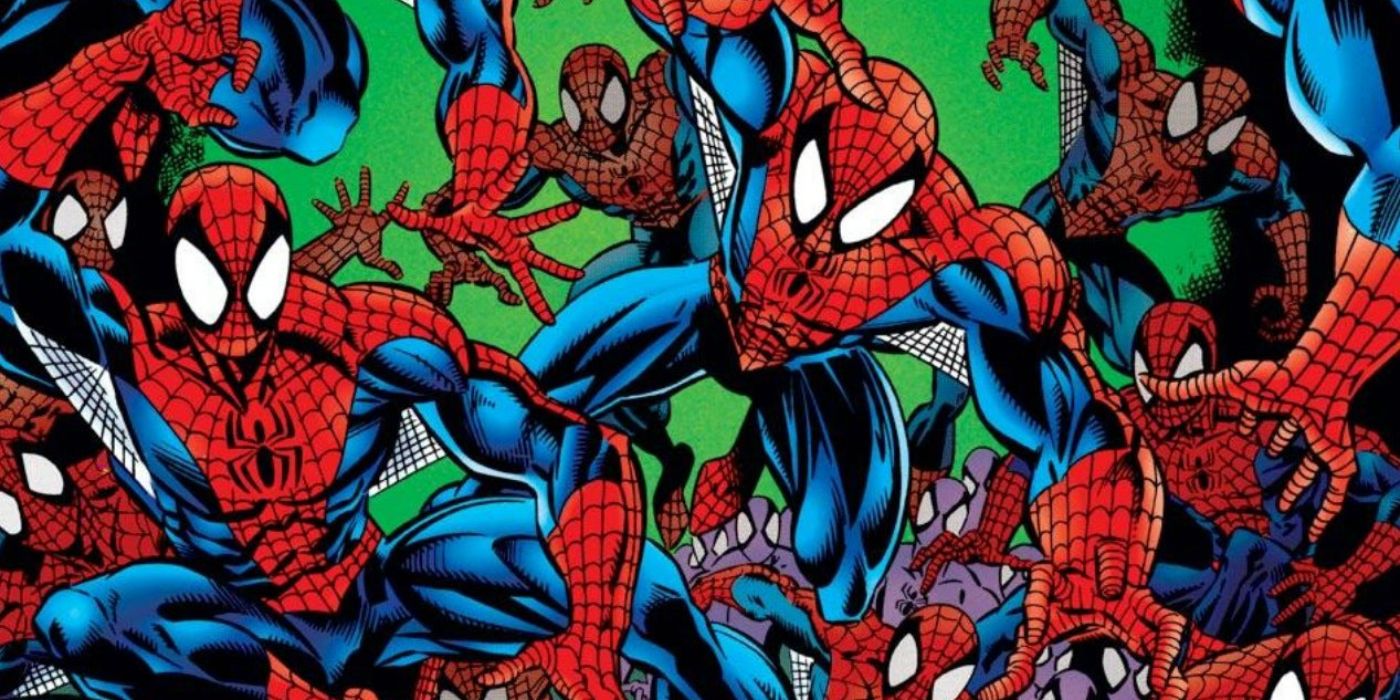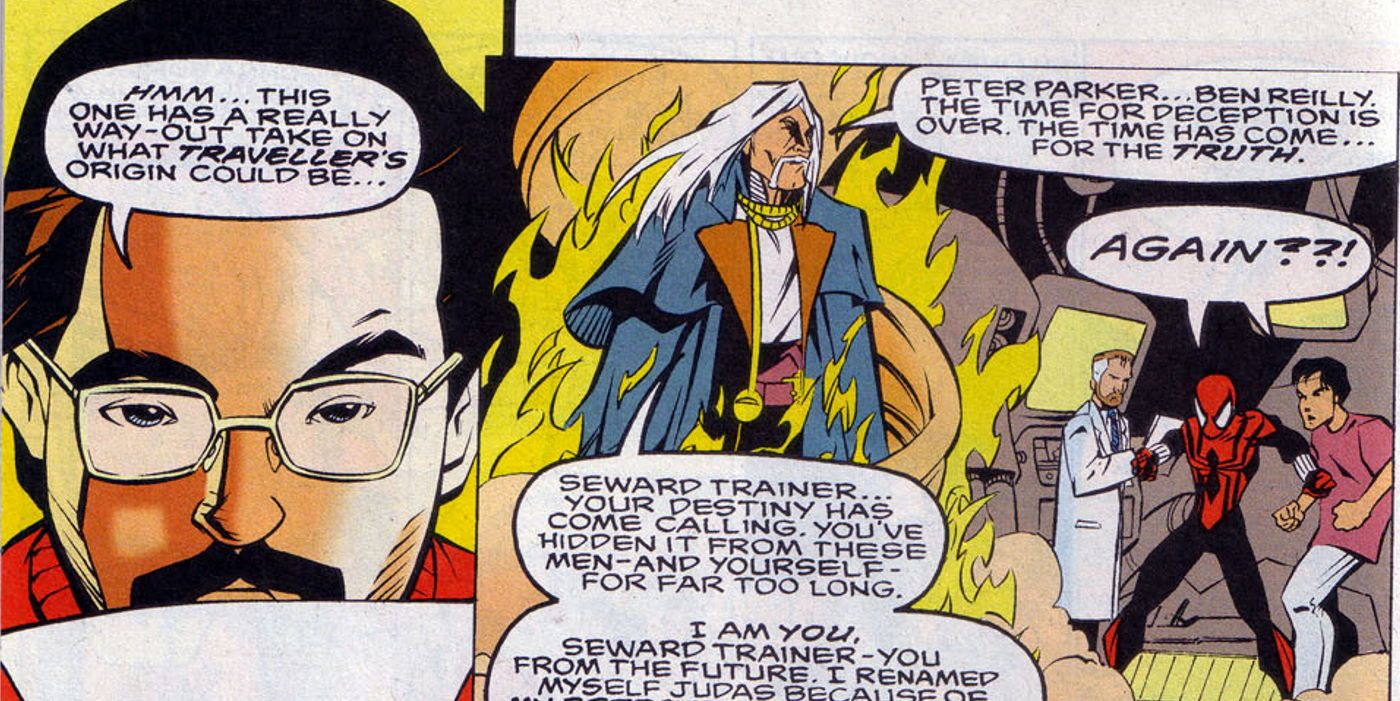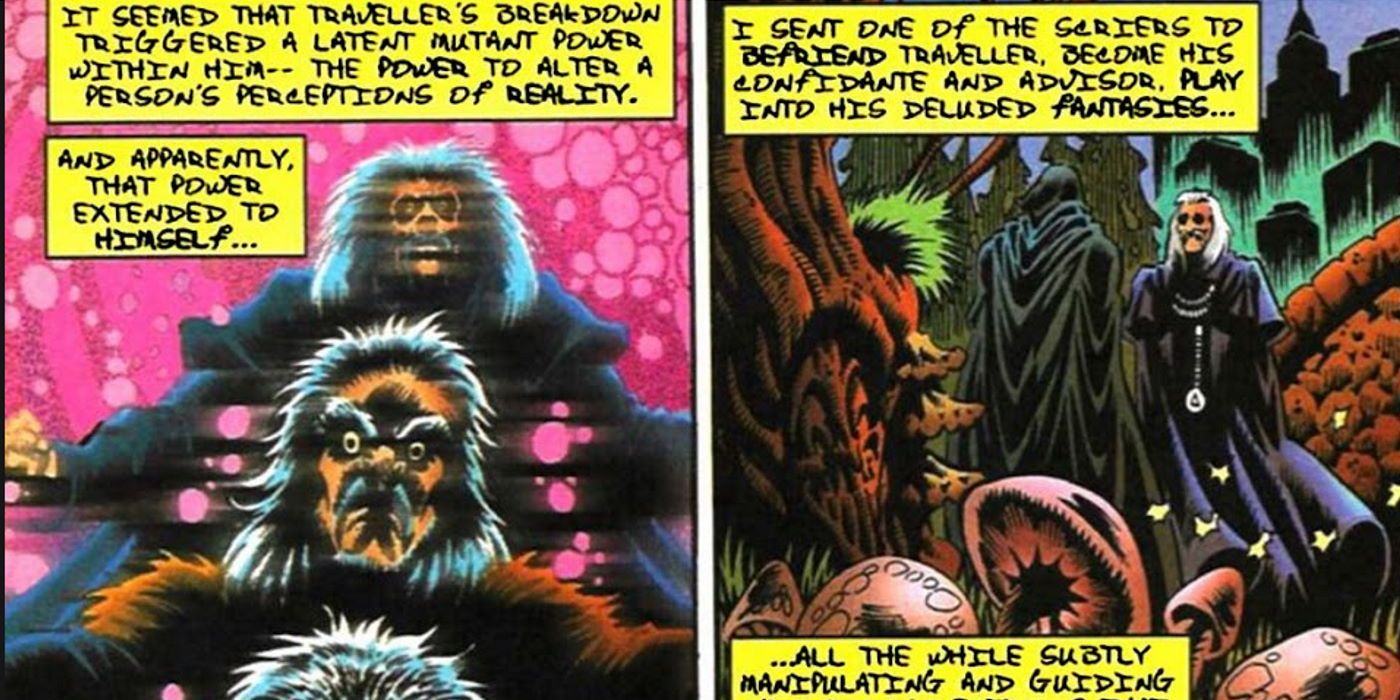Star Wars: Rise of Skywalker revealed that Supreme Leader Snoke, once promoted as the new trilogy’s main villain, was actually a genetically-engineered pawn of Emperor Palpatine who was the trilogy’s true mastermind. Some fans expressed displeasure at this, as it indicated the filmmakers didn’t have a solid plan for Snoke from the beginning and altered his story as the plot changed in the hands of different storytellers. Decades earlier, however, Marvel Comics did a similar thing to a new Spider-Man villain, Judas Traveller, introduced during the infamous Clone Saga.
Traveller – once thought to be Marvel’s version of Batman’s Ra’s al Ghul – became so confusing that writers basically wrote him out of the plot by resurrecting a more established mastermind – Norman Osborn (aka the Green Goblin). The parallels between the two behind-the-scenes stories – and the reasons for them – are intriguing, warranting a second look.
During the admittedly complicated plot of the Spider-Man Clone Saga, writer Terry Kavanagh and artist Steven Butler created the all-new character – a seemingly all-powerful being who claimed to have walked the Earth for centuries. Obsessed with analyzing the true nature of evil, Traveller began conducting psychological experiments on Spider-Man, and his recently returned clone Ben Reilly.

Traveller’s actions were often cruel – and dangerous. He released many of the inmates of Ravencroft Institute, to get Peter and Ben to fight them, and later staged a mock trial where supervillains like Carnage accused Spider-Man of driving them to crime. He even claimed he could resurrect Peter’s Aunt May (who was temporarily dead at the time) and make her young and healthy again just to test Peter’s resolve and reaction to temptation.
Judas Traveller’s powers were apparently limitless – he could control minds, bend reality, and claimed to have conducted his mission for ages. He was assisted in his duties by his “Host” – Medea, Mister Nacht, Boone, and Chakra – who also had powers of their own. Traveller’s greatest ally was the enigmatic Scrier, a pale-faced creature who Traveller claimed had been his friend for centuries.

While Judas Traveller appeared to come with a rich, unknown backstory, the truth was he was so enigmatic that even his own writers didn’t know anything about him. Most couldn’t figure out what to do with him or decide how he should fit in the overarching Clone Saga, so they just let him pop in and out of different scenes, tormenting Peter Parker for apparently no greater purpose than to drive Spider-Man and his clone crazy.
As the Clone Saga dragged on and on, the writers had to figure out how to clean up all the plot threads – including the ambiguous story of Judas Traveller. Marvel even released a comic book – 101 Ways To End the Clone Saga – that offered a tongue-in-cheek look at how writers and editors brainstormed multiple ways to wrap up the overly long story. Some of these solutions involved having Scrier send Peter Parker back in time to become Ben Reilly only to reveal himself to be Mephisto. Another revealed Traveller was really Ben Reilly’s scientist friend Dr. Seward Trainer who had traveled back in time X-Men style.
Whether or not the comic reflected what really happened behind the scenes at Marvel Comics is unknown – but Judas Traveller’s story was ultimately retconned in a rather humiliating way for the character. In the comic book The Osborn Journal, a recently resurrected Norman Osborn (who was brought back to life to help end the Clone Saga – not unlike how Emperor Palpatine was resurrected to wrap up The Rise of Skywalker) details how he was behind Judas Traveller’s entire existence.

According to Osborn, Traveller was actually a criminal psychologist who suffered a nervous breakdown. The breakdown activated his dormant mutant power to affect perceptions (meaning all of his seemingly omnipotent abilities were simply illusions). The breakdown, coupled with his powers, caused Traveller to really think he was an all-powerful immortal being. Deciding he could take advantage of Traveller, Osborn reinforced the man’s delusions by supplying him with his “Host” (actually agents that reported back to Osborn) and even supplied him with his “friend” Scrier. In this retconned scenario, “Scrier” was actually a member of a cult called the “Cabal of Scrier” that Osborn had taken over. By giving one of these members a costume that simulated Scrier’s “powers,” Osborn was able to further manipulate Traveller into tormenting Peter Parker for him.
Judas Traveller was ultimately written out of Spider-Man comics (writers clearly didn’t want to deal with him), yet the fact that Norman Osborn was basically brought back from the dead just to take the place of an ambiguous character that no one knew what to do with basically mirrors how Supreme Leader Snoke was used in the Star Wars sequel trilogy. While Osborn was later used in better-received stories, many regarded the reasons behind his resurrection as forced and convoluted and forced – showing how important it is to have a basic road map for a storyline before committing so many resources to it.




